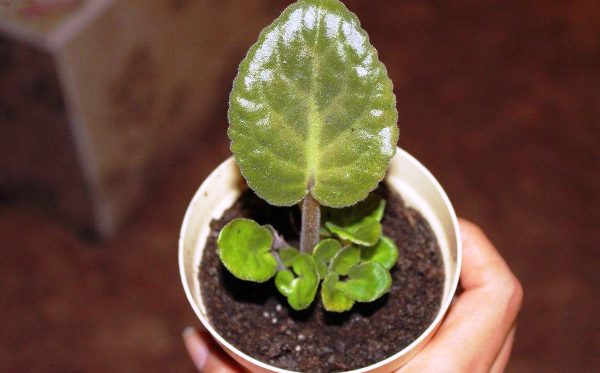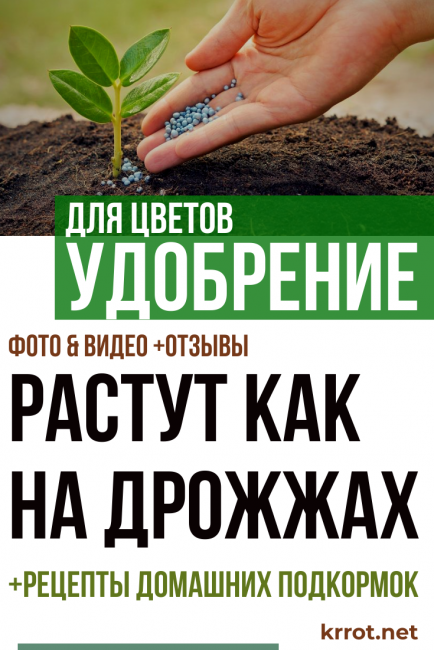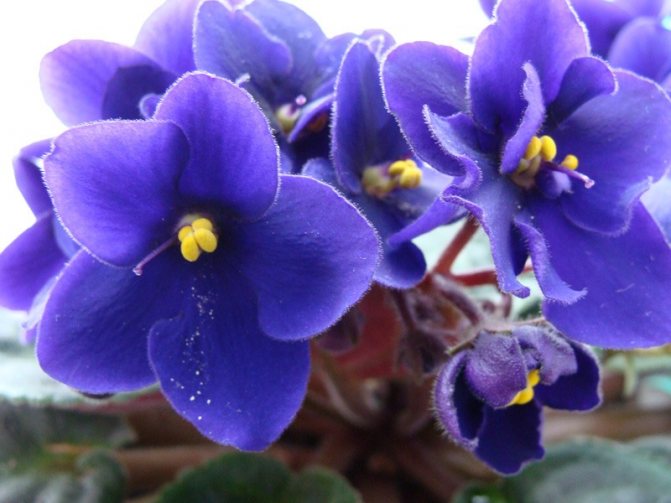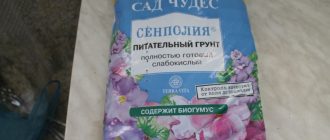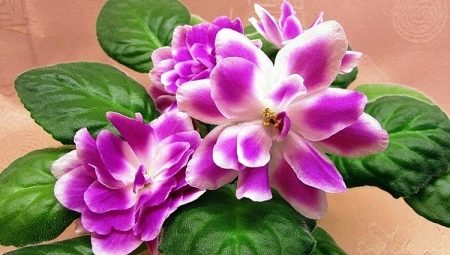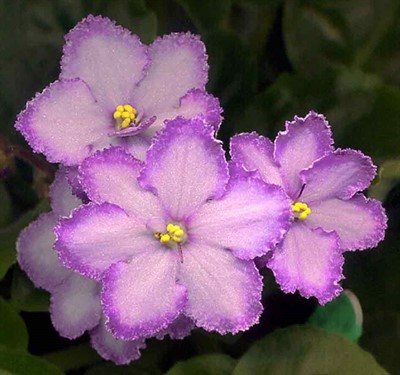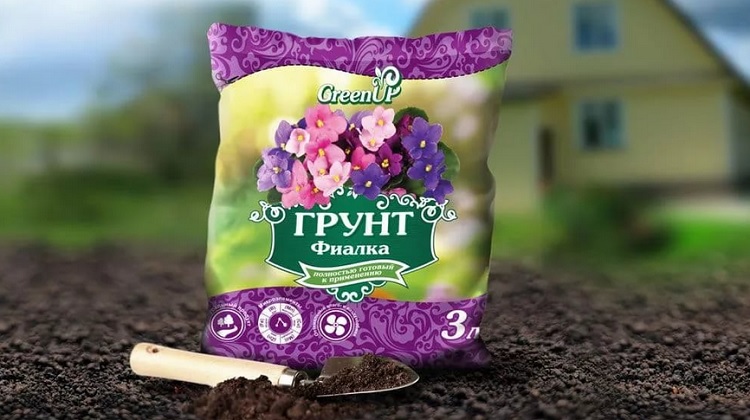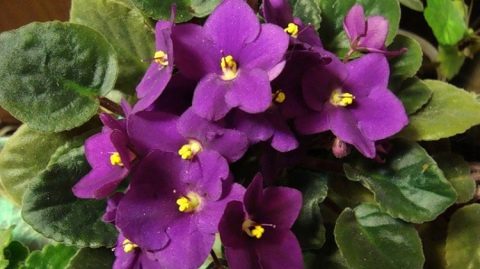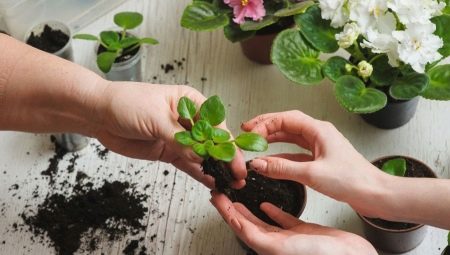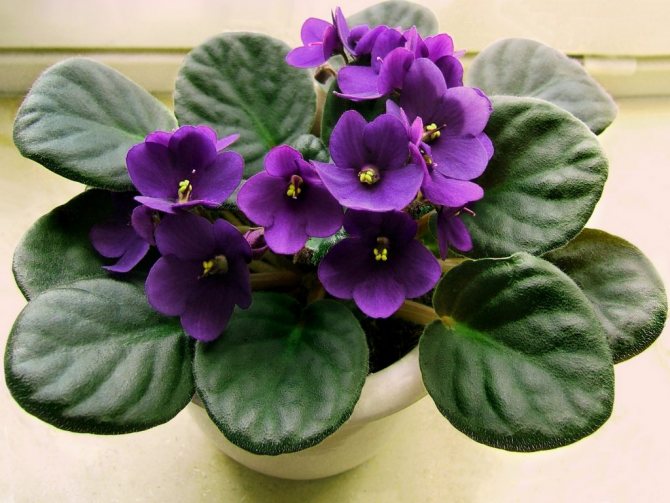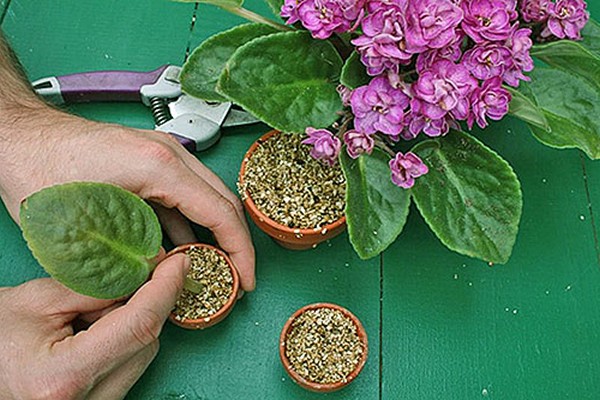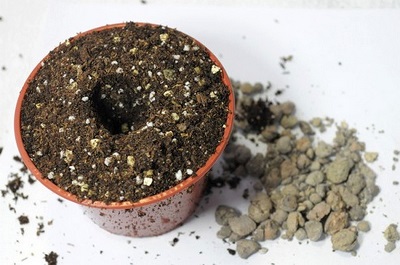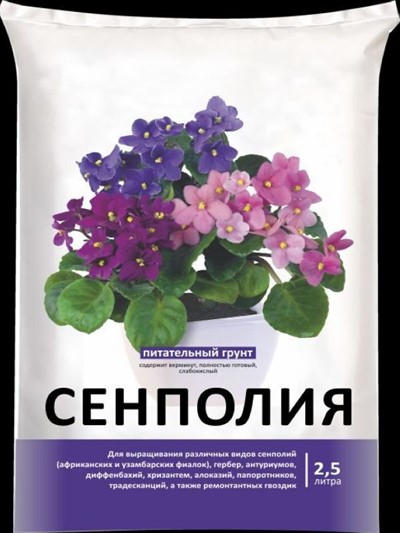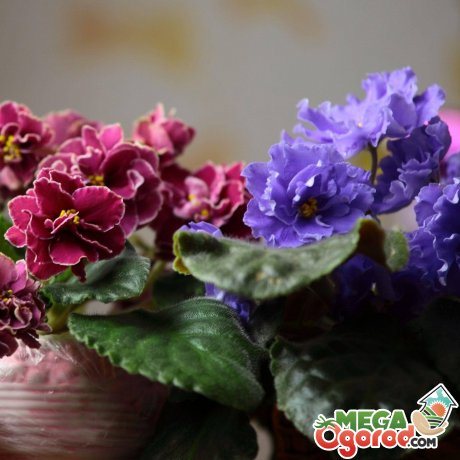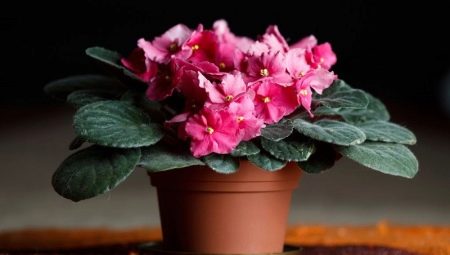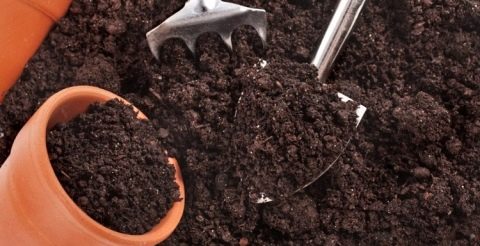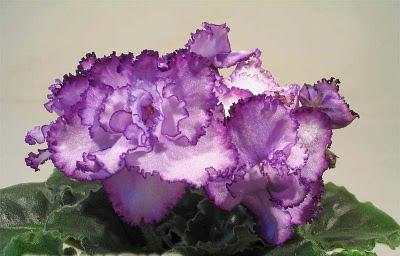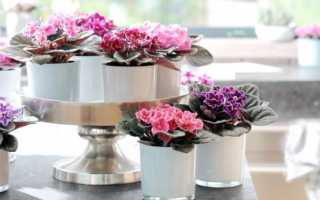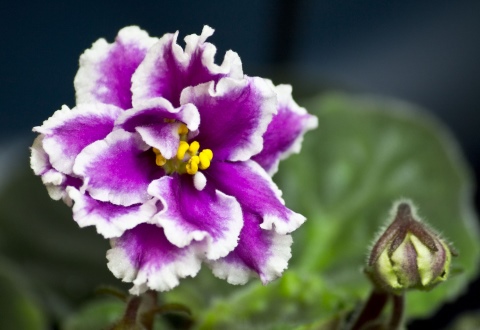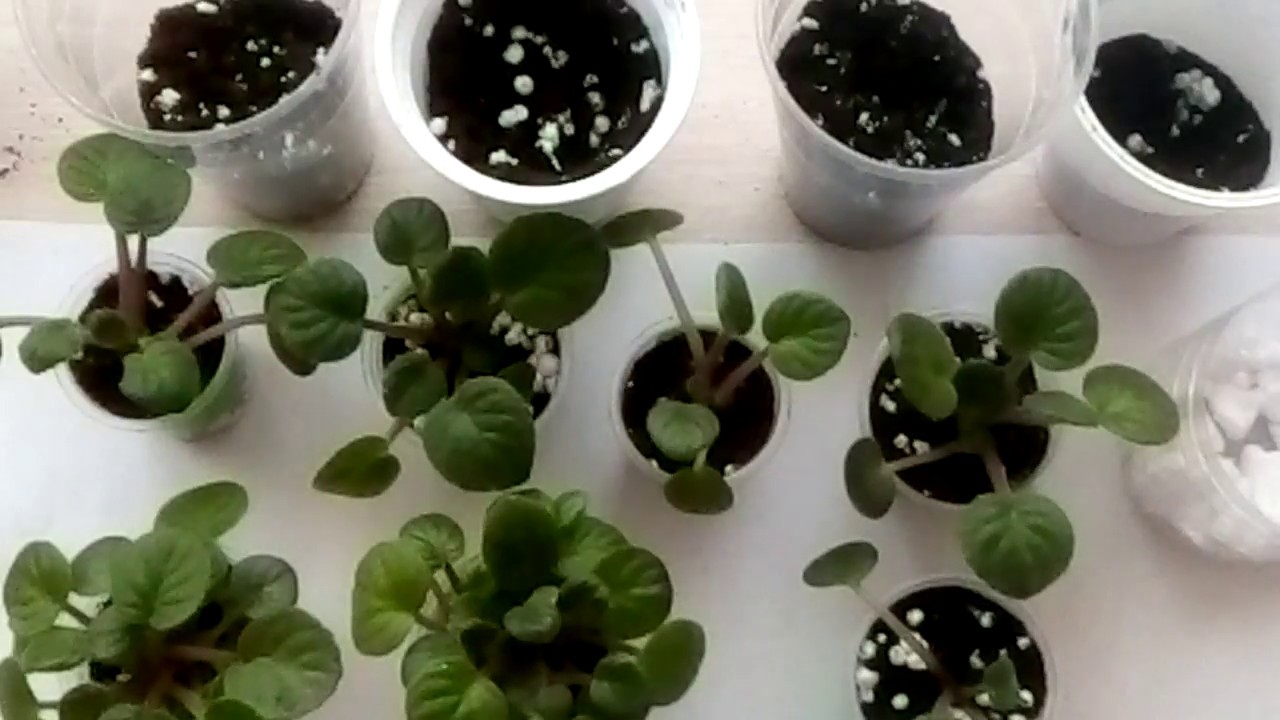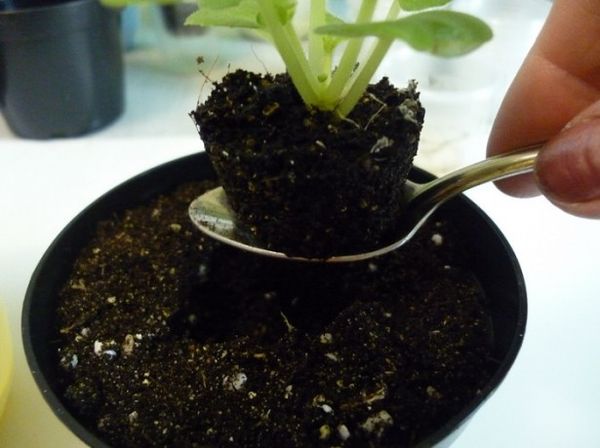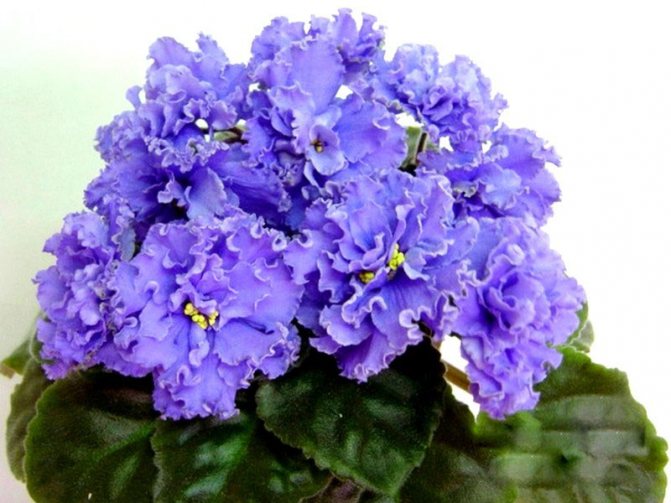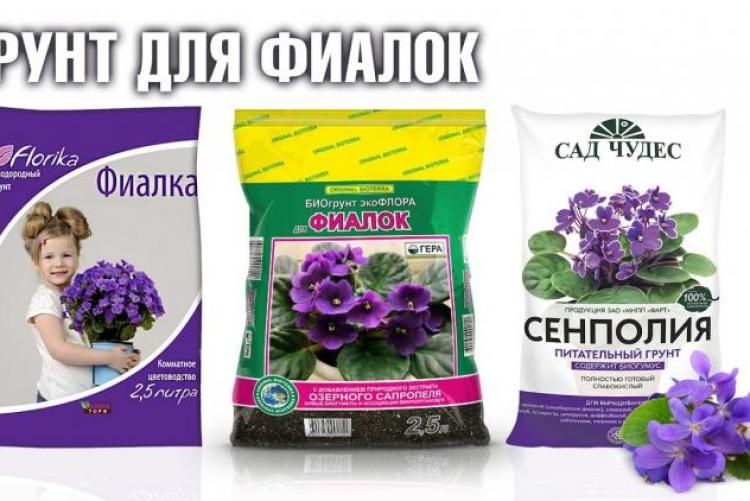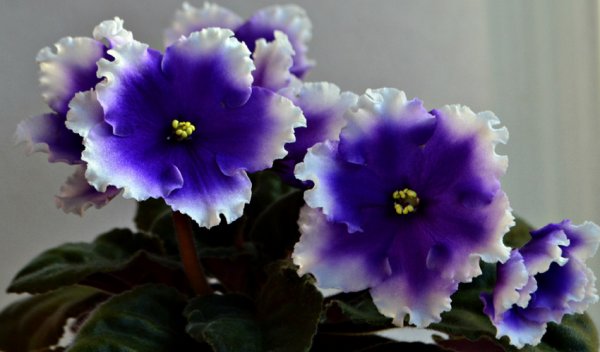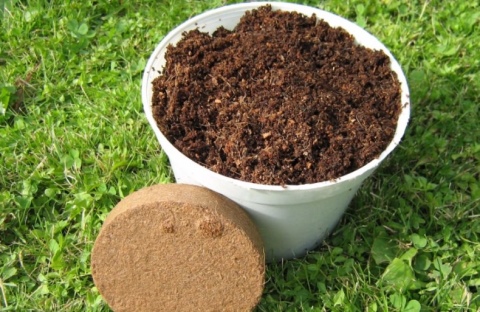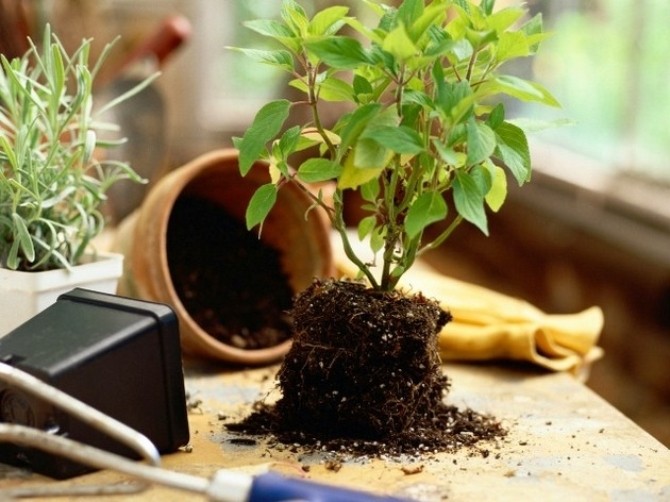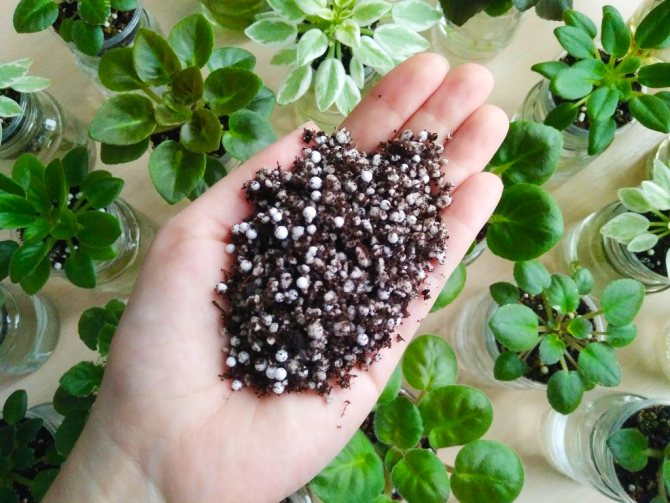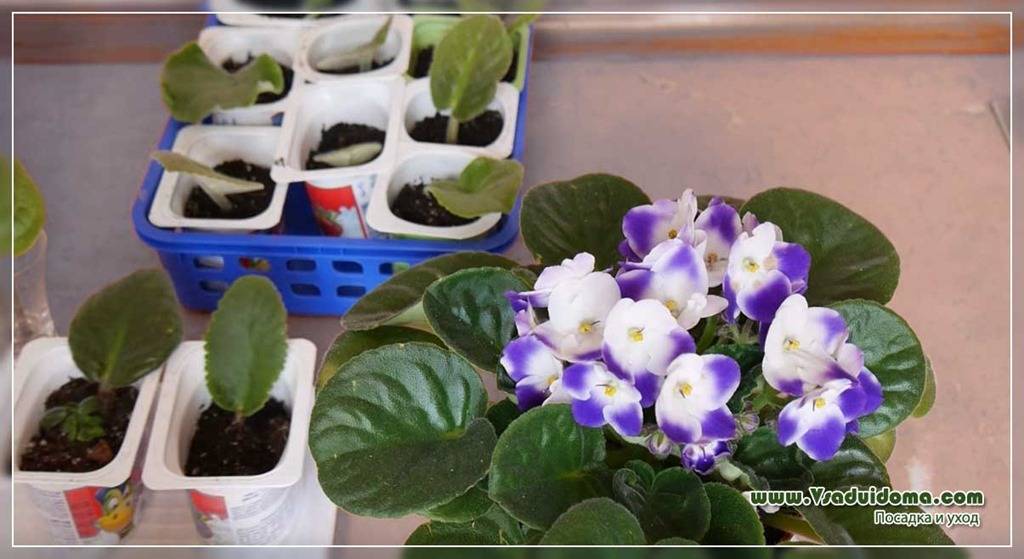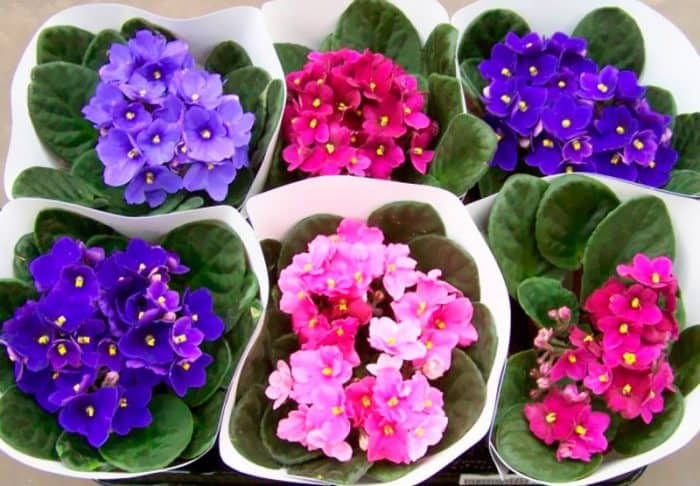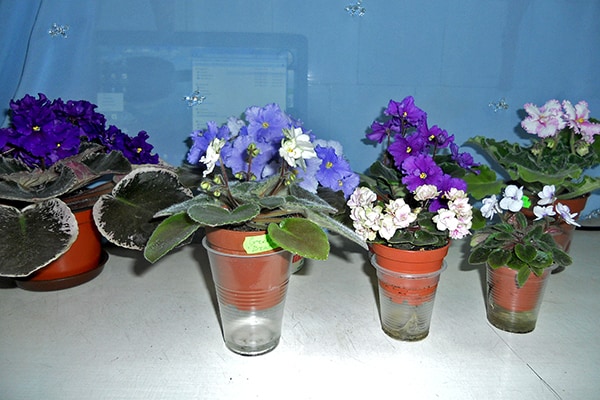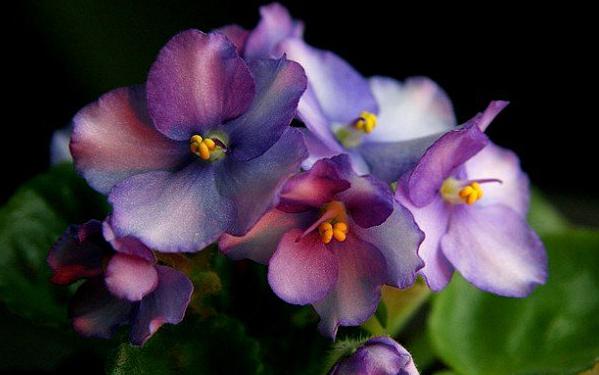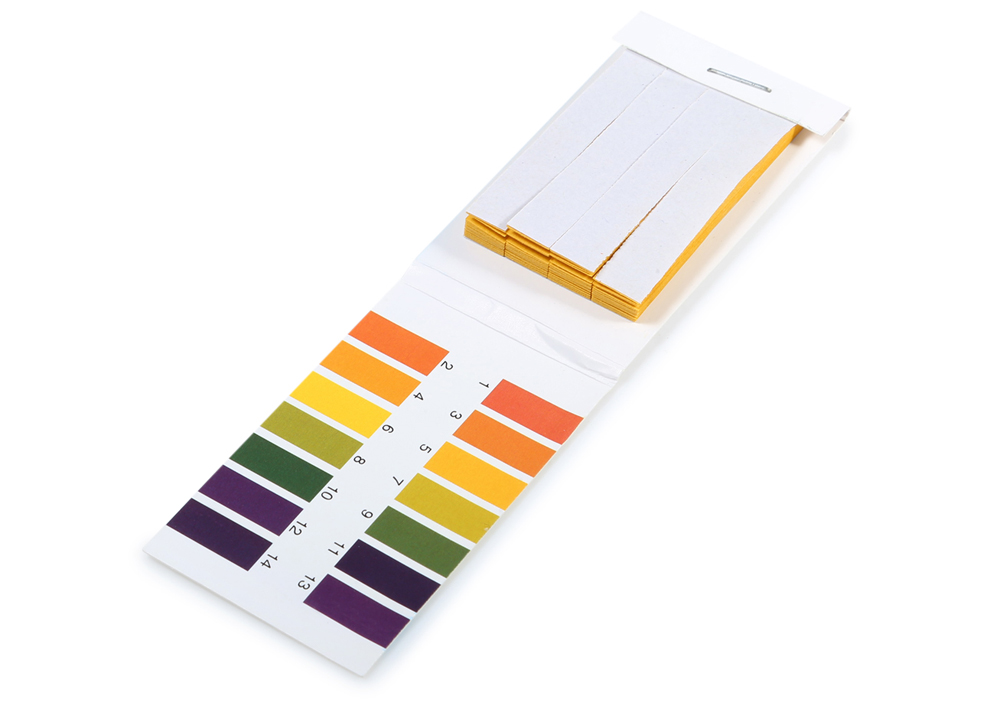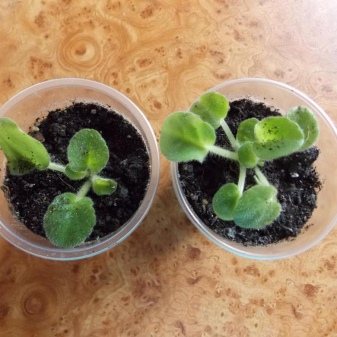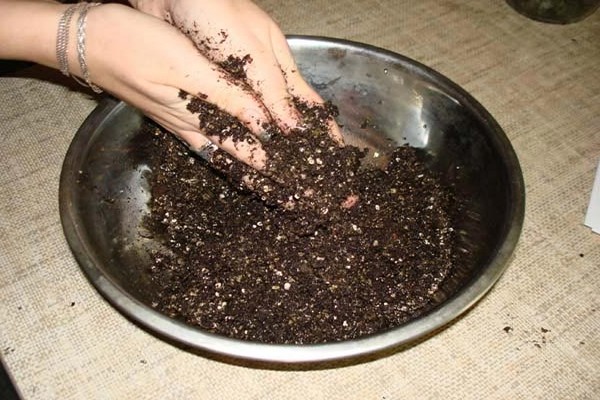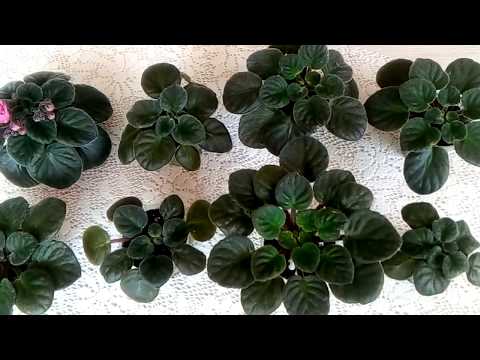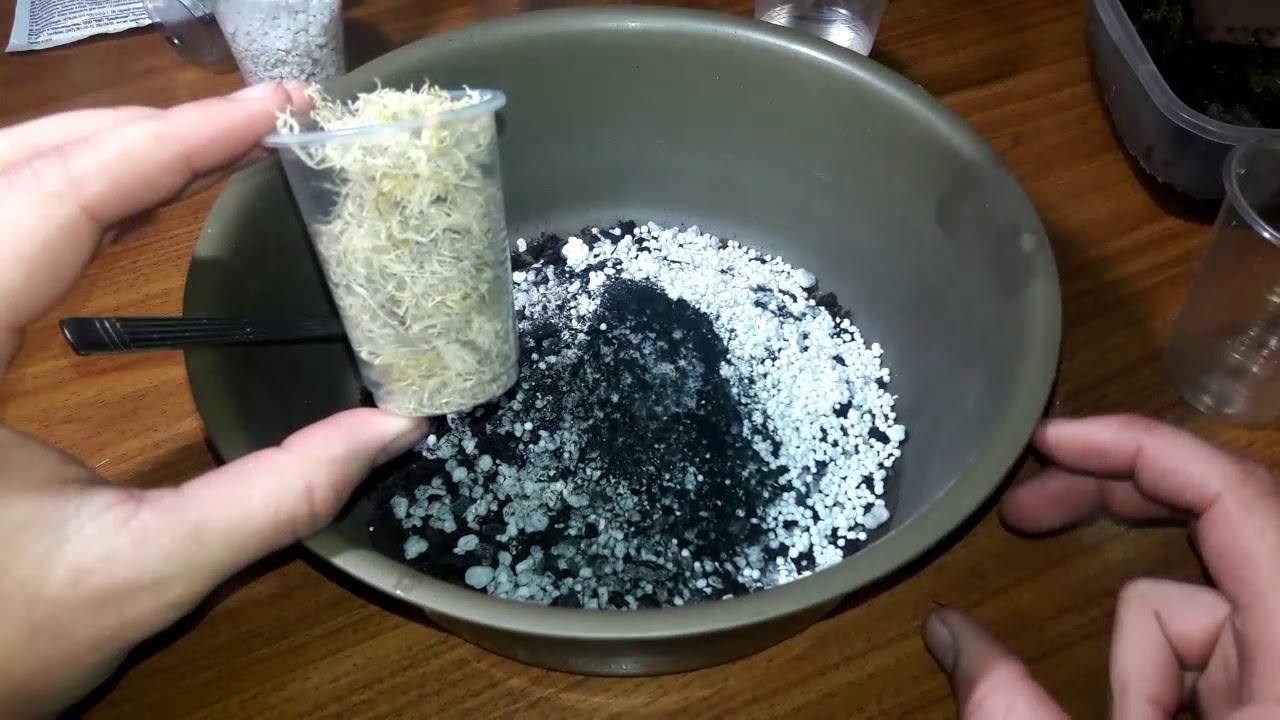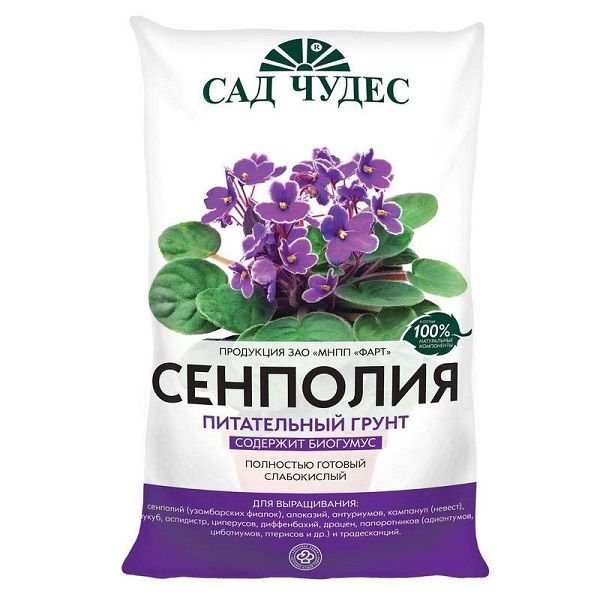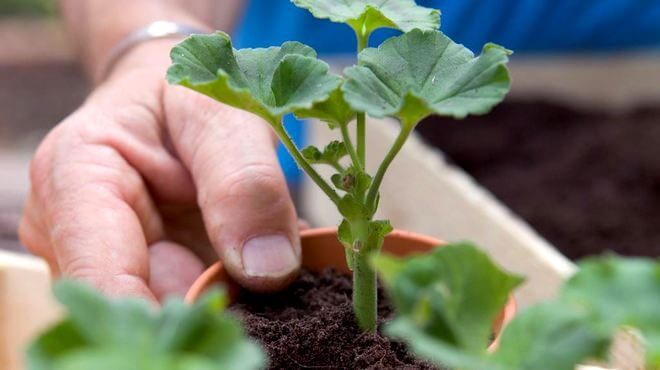What soil is needed for violets?
Choosing the right soil is quite simple, if you know what kind of soil is needed for flowers, what acid-base balance is required, what composition should be in order to provide the necessary looseness.
Soil composition
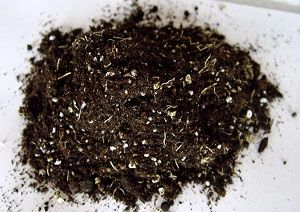 The soil at home for Saintpaulias should consist of leafy and coniferous land, which conduct moisture and air well, turf or high peat.
The soil at home for Saintpaulias should consist of leafy and coniferous land, which conduct moisture and air well, turf or high peat.
Be sure to add nutritious vermicompost, which provides the plant with all micronutrients. But it makes the soil heavier, vermiculite or perlite will help fix it.
A small addition of river sand will help to retain moisture well. Many began to add coconut substrate to increase moisture and air exchange.
Acid-base balance
When studying what kind of soil a violet loves, you should pay attention that the pH level of the soil must adhere to 5.5 - 6.5. With a decrease or increase in the indicator, the process of vital activity of the plant is disrupted
It will not get enough minerals.
Ready-made earthen mixtures for Saintpaulias have the required pH level, which is indicated on the package. To determine the acidity of the earth, special test strips are sold.
Determination of soil acidity.
ADVICE! If the test strips have identified alkaline soil, it can be adjusted by watering with a vinegar-based solution (4.5 liters of room temperature water with 2 tablespoons of vinegar). Watering a solution based on dolomite flour can reduce the acidity of the soil (4.5 liters of water at room temperature with 1 tablespoon of flour).
Looseness
What kind of soil is needed for violets to grow well? Primarily breathable and permeable. To increase these indicators, you can add to the soil mixture:
- granular perlite;
- vermiculite;
- sphagnum moss.
Ready-made soils for violets
It is most preferable for planting violets to choose a soil mixture "For sowing seeds and planting seedlings" (ASP GREENWORLD
), consisting of nutrients, sand, high-moor peat and coconut fiber.
On the basis of low-lying peat, soils "Saintpaulia" ("Garden of miracles
»), In which it is recommended to add baking powder - perlite, sphagnum and fertilizers.
Firm "Terravita
»Produces an earthen mixture based on peat, but for violets the soil is somewhat sour, so it is better to use it as a peat additive, rather than as an independent substrate.
«Academy of Growth
»Soil" Violet "nutritious slightly acidic from high moor peat with the addition of limestone materials.
Manufacturer Fasco
soil for violets "Bereginya" - for transplanting and sowing violets consists of high and low-lying peat, sand, dolomite flour, compost and fertilizers, as well as "Flower Happiness Violet" from peat soil, sand, dolomite flour with the addition of complex mineral fertilizers.
It should be remembered that the soil purchased in the store must be steamed with boiling water or calcined in the oven at a temperature of 100 degrees. Naturally, it is necessary to give such land time to restore the microflora for about a month, and be sure to enrich it with fertilizers.
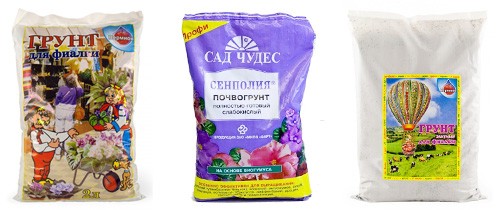
Usually soil for violets retains its nutritional properties for a long time with timely feeding of plants. It is best to replant Saintpaulias once a year, between April and May, replacing the soil.
Often, ready-made soils for violets are characterized by increased soil acidity and require the addition of fillers, baking powder. Experienced flower growers, knowing all the whims of their green pets, prefer to make up the soil mixture for violets on their own.There are several options for potting mixes, mainly the differences relate to proportions, but some growers have their own secrets.
Professional primers
Many violet waters contain a large number of plants. Passion for Saintpaulias involves breeding beautiful, but very capricious varieties in care. In such cases, it makes sense to purchase professional primers for violets. An example of a very whimsical variety that needs a professional substrate is the violet of the selection of Elena Korshunova Sady Semiramis. This is a lovely plant with huge 6-8 cm deep double, dark red flowers in the form of chrysanthemums. Forms fabulous cascades over a small leaf rosette.
The most commonly used professional mixtures for violets: Klasmann TC1 substrate, Laflora soil, Kekkila White substrate (Kekkila soil).
Professional primers are usually more expensive and are sold in 200 liter bags, which is difficult for amateur flower growers to obtain. Which exit? Buy bags in groups of several people.
Advice! You can turn to large collectors of these indoor flowers. Sometimes they sell professional soil mixtures in small batches.
KLASMANN TS1 is especially recommended as a universal substrate. The main ingredient is a surfactant for quick and easy wetting, mineral water-soluble fertilizers, microelements. Agrochemical indicators: pH (CaCl2) —5.0; pH (H2O) —6.0. The fertilizer content is 0.5%.
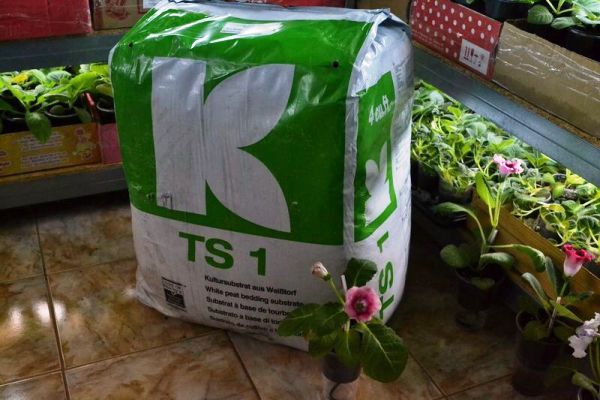
Klasmann (Klasman) peat substrate TS1
Where to buy ready-made soil
If you do not have the time or desire to make soil mixture for violets with your own hands, you can purchase ready-made soil in the store.
Advice! It is necessary to take a responsible approach to the choice of a purchased substrate. Before making a purchase, it is recommended to read reviews or consult with a specialist.
The Greenwold universal soil has proven itself well. It is suitable for growing many flowers, except those that require acidic soils (eg azaleas). It has a good organo-mineral composition:
- pH 5.8-6.2;
- nitrogen (N) 150-400 mg / l;
- phosphorus (P2O5) 120-300 mg / l;
- potassium oxide (K2O) 180-300 mg / l
The potting soil contains all the necessary fillers. The disadvantage is the high price. Quite good purchased substrates for Saintpaulias: Agrobalt made in Estonia; FASCO Flower happiness. Soil for violets.

greenwold ground universal for violets
Average prices
To compare the cost of the finished soil, packages of the same capacity, 5 l each, were selected:
- The most expensive potting mix is coconut; packaging costs around 350 rubles *;
- Universal primer for flowers Greenworld - 200 rubles;
- Soil "Violet Saintpaulia" based on peat - 185 rubles;
- Classman TS-1 - 150 rubles;
- "Flower happiness" - from 90 rubles.
Approximate prices are indicated, actual prices depend on the volume of the purchase, the region (transport costs vary), the size of the store's trade margin. You can buy a package of domestic mixture within 50 rubles.
Important! The composition of the soil of each batch differs in quality, much depends on the storage conditions of the bags. When condensation forms in them, the soil becomes salted.
Pros and cons of factory soils
The finished soil at a specialized outlet has, perhaps, one drawback - you have to pay money for it. And then we will note the pluses. There are quite a few of them:
- The purchased soil is treated from pests and diseases, there are no weed seeds in it.
- It is ready to eat right after you bring it from the store.
- It contains the necessary trace elements and fertilizers.
- The pH is known.
- All information about the composition of the soil, additives - if any (perlite, expanded clay), mineral fertilizers introduced into it is displayed on the package.
- There is no need to deal with the preparation of soil in the warm season, to suffer with its processing and subsequent storage.

ON THE PHOTO: The package contains complete information about the soil: its structure, chemical composition; applied mineral or organic fertilizers, leavening additives
Of course, purchased soils are most often only the basis for preparing an earthen mixture for Saintpaulias - with the exception, perhaps, of not the cheapest brands such as "Vermion" or GREENWORL. They can be used immediately as soon as you decide to start a transplant. Most of the soils, when it comes to the Uzambara violets, require some "refinement".
Almost all soils offered by the trade are made on the basis of high moor (red peat). The exception is special nutrient soils such as vermicompost - they are good to use as an additive to "peat" soils.
Do-it-yourself correct soil
If it is not possible to buy really high-quality soil or the substrate is required in large quantities, you can prepare it yourself.
To create the correct soil per 10 liters, you will need:
- High peat - 7 l or 5 l (more peat is needed for plants that prefer an acidic reaction, as well as in those cases when you want to fertilize plants less often);
- Cocoa soil (coconut shavings of fine fraction) - 2 or 4 liters, respectively (the more coconut soil is used, the more often the plant will have to be fertilized, since coconut shavings do not contain nutrients);
- Perlite - 0.7 l;
- Vermiculite - 0.3 l (with an increased content of cocoa soil, vermiculite is not required, perlite is added instead).
This instruction is not ideal, since it requires the owner to monitor the amount of fertilizers more thoroughly (compared to using store-bought soil) and use them more often. We remind you that cocoa soil does not contain any nutrients, and high moor peat contains a small amount. With an increased content of these substrates in the soil, the use of fertilizers is required more often. The mixture can be improved by using diluted fertilizers during the soaking phase of the cocoa soil (which is mandatory). Their concentration depends on the plant's need for nutrients. For demanding crops (bromeliads, ferns and palms), the concentration is reduced to 1: 2. For undemanding species (Azalea, Heather, Camellia) - up to 1: 4. If the soil is selected correctly, the root system develops actively, mastering the space of the pot.
The better the soil prepared at home
Many people prefer to buy soil for indoor plants in stores. But you can also compose it yourself. In this case, the mixture will have the following advantages:
- the ability to comply with the exact recipe, adding exactly as many substances as required by a particular type of plant;
- adaptation of seedlings to a new composition is much faster;
- allows you to save money.

The recipe for the soil mixture at home
Despite the advantages, there are also disadvantages. There is a high probability of infection of an indoor flower with fungi or diseases. To avoid this, it is necessary to pre-treat the constituents of the soil.
Disinfection of flower soil
Before planting a houseplant, the soil is disinfected. Otherwise, there is a risk of mold, fungal infections and bacteria. Disinfection is required for self-procurement of components. In the case of purchased components, processing is not necessary, but it will not be superfluous.
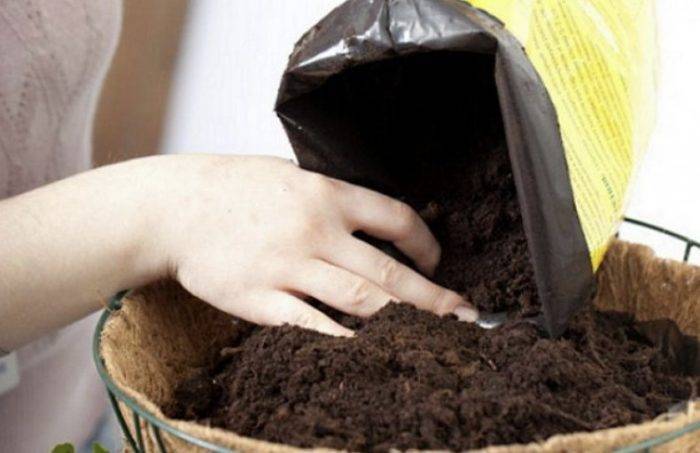
After preliminary washing in water, disinfection is carried out in the following ways:
- treated with a weak solution of manganese;
- poured over with boiling water;
- stand over steam;
- heated in an oven or microwave oven.
The last method is radical, since in addition to harmful organisms, it also destroys useful components. Use it only as a last resort. For the same reasons, herbicides and roundup are not used for treatment.
Important! The soil in which insects or worms are bred becomes unsuitable for planting.It is extremely difficult to remove parasites; it is easier to purchase a new mixture or its components. The soil from under other plants is also not suitable for planting new flowers.
It contains the smallest particles that can become a source of infection. In order not to resort to soil cultivation in the future, wood ash is added during planting, which is a natural antiseptic.
The soil from other plants is also not suitable for planting new flowers. It contains the smallest particles that can become a source of infection. In order not to resort to soil cultivation in the future, wood ash is added during planting, which is a natural antiseptic.
Despite the rich selection of potting mixes sold in specialized stores, none of them can fully provide the flower with everything you need. Therefore, it is easier to compose the substrate yourself, following the recommendations developed for a particular plant species.
Features of growing and caring for violets
The main conditions that need to be created for such flowers are warmth, bright light, high humidity. They should be placed in a well-lit place with diffused lighting and at the same time protected from sunlight. Daylight hours should be 13-14 hours. In winter, you need to install additional lighting.
The optimal place for the flower to grow is the northeastern and northwestern window sills. Shading is required when grown on the south side.
The best decorative effect and stable growth are observed in those plants that are grown at a temperature of + 20 ... + 22 ° C.  Violets cannot tolerate 3 grooming mistakes:
Violets cannot tolerate 3 grooming mistakes:
- excessive and frequent watering;
- exposure to drafts;
- strong drying out of the soil.
Therefore, the flower must be protected from these factors.
Watering should be moderate and be sure to be carried out in a pan or by a wick method (connecting a pot with a violet and a container of water with a cord through which water seeps through). It is recommended to make 1-2 moisturizers every 7 days.
For irrigation, use rainwater, filtered or settled for 2 days, room temperature water. After 30–40 minutes after moistening, the water remaining in the sump must be drained. It is not necessary to allow it to stagnate - this increases the risk of root rot.
The flower does not like spraying. To maintain the required high humidity, at 60-70%, you need to install a humidifier, wipe the leaves with a damp cloth, spray the air next to the flower so that drops do not fall on it, place the pot on a tray with wet pebbles or expanded clay.
During the growing season, flowers need to be fed. This will help preserve the beauty of the leaves, achieve long and abundant flowering, and the health of the bush. At a young age, more nitrogen-containing fertilizers are applied, at a mature age - potassium and phosphorus fertilizers. They use liquid root baits designed specifically for violets.  Violets degenerate very quickly and are usually renewed every 2-3 years. The transplant is carried out once a year by the transshipment method.
Violets degenerate very quickly and are usually renewed every 2-3 years. The transplant is carried out once a year by the transshipment method.
These flowers can grow in any pots - plastic or ceramic
But it is important to choose them according to the size of the plant, because in rather large containers they will refuse to bloom, and in small containers they will grow poorly. It is also important that there are drainage holes in the pot.
In specialized stores, you can purchase special pots for violets - they provide a place for draining unnecessary water and a special hole for supplying moisture.
Soil in nature
Preferences are highly dependent on the specific variety of this flower. Some Saintpaulias prefer sunny meadows, hills, mountain slopes, others feel great in shady gorges, thickets of bushes. Still others grow well in swampy soil, while the fourth tolerate drought and poor soil well.
These plants are widespread from the Arctic to Tierra del Fuego, hence the different requirements for soils.Some varieties thrive even in semi-deserts, prairies and seaside dunes.
Some of the varieties are distinguished by lush and very spectacular flowering, for example, the violets "Ice Rose", "Amadeus", "Duchess" and "Wedding Bouquet".
Fertilizers
Experts agree that after a few months the soil in a small pot is almost completely depleted, which negatively affects the Saintpaulias and violets require fertilization.
 They are classified into: Simple mineral; Complex mineral; And organic plant food. When using any fertilizer, the main thing is to adhere to the measure. All three species are necessary for the full growth of Saintpaulia, only it must be borne in mind that they must be alternated.
They are classified into: Simple mineral; Complex mineral; And organic plant food. When using any fertilizer, the main thing is to adhere to the measure. All three species are necessary for the full growth of Saintpaulia, only it must be borne in mind that they must be alternated.
Uzambara (uzumbar) violet
- a plant of the Gesneriev family, grows in the natural environment of tropical and subtropical regions of Asia, Africa, Eastern Australia, South America and the islands of the Indian Ocean.
Saintpaulia
- a plant named after the father and son of Saint-Paul, who brought a plant unknown to Europeans from the Uzambara district (modern Tanzania) in the 19th century, presented for the first time at the international flower exhibition in Ghent in 1893.
Violet room
- one of the most popular plants in indoor floriculture since 1927. By 1949 more than 100 varieties were bred, and today their number exceeds several thousand.
Rooting
- possibly in water, substrate, moss.
Priming
- purchased soil or a mixture of leaf, coniferous, turf and peat land in a ratio of 3: 1: 2: 1 with the addition of disintegrants (perlite, vermiculite, river sand, crushed sphagnum moss.
Lighting
- it is best to put flower pots on the western or eastern windows. In order for the plant to be evenly illuminated from all sides, the pots are periodically turned. In winter, when daylight hours decrease, you can use artificial lighting - fluorescent lamps.
Care
- real art and serious painstaking work at the same time, including watering, feeding, creating a favorable humid climate. Water the saintpaulias as the soil dries. The soil should be regularly moistened, but excess moisture should not stagnate in the roots. When watering, care must be taken so that water does not fall on the leaves. Do not water the uzambar violet with cold water. Top dressing is carried out with a complex mineral fertilizer every two weeks. Saintpaulia reacts negatively to the lack of nitrogen in the soil. The optimum air humidity is about 50%, the temperature is 20-22 ° C, without sudden fluctuations and drafts. The leaves of the plant should not touch the window pane. Removal of faded flowers and damaged leaves is carried out regularly.
Reproduction
- planting a leaf cutting, part of a leaf, a daughter outlet. The most popular way is to root a leaf cuttings. Root formation and development of babies lasts 4-8 weeks.
Pests
- this is one of the problems of the grower. There are many different types of pests and it is very difficult to classify them. Among the pests of Saintpaulia, several groups can be distinguished: ticks (spider, flat, transparent, etc.), insects (aphids, thrips, springtails, podura, worms, whiteflies, scale insects, etc.), worms (nematode).
Diseases
- distinguish between infectious (gray rot, powdery mildew) and non-infectious diseases (decay of the stem and root, wilting of the lower leaves, yellowing, leaf spot, incomplete opening and premature drying, falling of flowers) of plants. The causative agents of infectious diseases are bacteria, fungi, viruses. To prevent an infectious disease, it is necessary to strictly observe the regimes of watering, temperature, humidity, illumination. Noncommunicable diseases usually arise from agricultural practices. They may appear on one copy and not apply to others.
As a child, I naively thought that to plant indoor flowers, it was enough just to collect land in the garden, because there is nutritious black soil. And so that the terrible worms (which I was very afraid of) did not get into the pot, I only picked up the soil in the mole, as my mother assured that the mole hunts for worms, so they are guaranteed not to be in its hole.
But later I realized that not all crops are good in one hundred percent black soil. For example, my beloved violets were simply sick in it. Well, lucky to find out in time about the ideal earth constituents for such flowers. Transplanting into the right soil managed to save my bright pets!
First of all, it should be airy: it allows oxygen to pass through well, allowing the roots to breathe, and not retain water.
Acidity is also an important point. Violets love soil with neutral acidity. If you prepare the substrate with your own hands, it is difficult to guess the acidity with accuracy, but if you are buying soil, look for ph numbers from 6.5 to 6.8.
Selection options
Gloxinia is a finicky plant. Let's figure out what kind of land is needed for this plant. For its normal and proper growth, nutritious soil is needed, moderately saturated with oxygen. The soil should be loose, soft, nutritious and breathable. The flower prefers nutritious soils that will provide sufficient micronutrients during the flowering period. The future fate of your flower depends on the correct choice of soil.
It is important to select and select the correct soil composition. The health of your plant, its fertility and further development depends on it.
This indoor flower prefers nutritious soils that will provide sufficient micronutrients during the flowering period. For the favorable growth of this plant, it is necessary to take a mixture of earth: -one part of deciduous soil; - one part - peat soil; - half of the part is sand. To loosen the soil, I take rotten sawdust. They serve as an excellent cultivator and at the same time nourish the soil.
IMPORTANT: Do not overmoisten the soil. This can lead to rotting of the tuber and its further death.
The acidity of the soil should be 5.5 - 6.5 pH. At higher acidity, the plant dies.
Plant soil
The soil must have certain characteristics so that violets can bloom normally in it.
In this regard, land taken in the park, local area, etc., is not suitable for growing Saintpaulia:
- Acidity.
The soil should be neutral, and its optimum acidity should be from 6.5 to 6.8 Ph. If this figure is lower, the plant will not receive all the necessary nutrients, which can lead to its death. With increased acidity, violets do not receive the required amount of phosphorus, which is why they become depressed, lethargic; -
Air permeability
... The plant must be planted in loose soil that allows air to pass through well.
What land is needed for violets
In special formulations, the concentration of nutrients is balanced for the species Saintpaulias. Some varieties of breeding flowers prefer a special soil, it is selected experimentally. Chimeras prefer a land rich in humus.
More fillers are added to the soil for small-leaved Saintpaulias. It has been noticed that pink violets are the most unpretentious to the soil, capable of growing on humus. Purple ones are capricious, their abundance of flowering depends on the presence of phosphorus.
Important! With an excess of nitrogen in the soil, most violets will increase the formation of stepchildren - shoots in the leaf axils.
What soils exist
So, what kind of soil is needed for indoor violets? It can be a ready-made universal primer for indoor flowers or horticultural crops. The main thing is to check the correspondence of the acidity of the soil mixture. The condition of the plant depends on this. It is not a fact that in such a land there are nutrients necessary for violets in full. Better not to risk it.
Ready-made professional primers
Land mixtures are similar in composition, they contain:
- high-moor (rotted) and low-lying (acidic) peat;
- some kind of baking powder;
- complex of mineral supplements.
The exception is coconut substrate. Such soil for Saintpaulias is called "coconut peat". It is sold in briquettes, bars, large tablets. Contains essential nutrients, sterile. There are no bacteria or insects in the mixture of coconut fibers, nut flakes, remnants of the peel. Coconut ingredients have good water retention capacity.
Important! Such soil for violets in normal home conditions does not require replacement within 5 years. What kind of soil is better for violets, it is incorrect to say
Each grower chooses the composition he likes. Features of the composition of mixtures:
What kind of soil is better for violets is incorrect to say. Each grower chooses the composition he likes. Features of the composition of mixtures:
- "Violet" brand GreenUP is universal, in addition to peat, dolomite flour, it contains phosphorus, rare trace elements.
- "Garden of Wonders for Saintpaulias" contains river sand, vermicompost, agroperlite. It is acquired by nurseries engaged in breeding work.
- Greenworld universal flower primer contains perlite, soil pH varies within the desired range.
However, the ideal soil for violets is "Aurica's Gardens", packaged in 1 liter. The package is laid in layers:
- turf land
- peat containing up to 5% humus;
- river sand, which improves drainage;
- sphagnum moss, which has bactericidal properties;
- vermiculite crumb, which forms the texture of the soil;
- birch or aspen charcoal is a good antiseptic;
- trace elements for indoor flowers.
Note! For layering, you can use soil ingredients to renew old potted soil.
The main task of the soil mixture is to form an earthen coma that does not require loosening. Light soil is easy to reach when replanting, it is suitable for wick irrigation.
Light loose soil allows you to quickly transplant the plant
Average prices
To compare the cost of the finished soil, packages of the same capacity, 5 l each, were selected:
- The most expensive potting mix is coconut; packaging costs around 350 rubles *;
- Universal primer for flowers Greenworld - 200 rubles;
- Soil "Violet Saintpaulia" based on peat - 185 rubles;
- Classman TS-1 - 150 rubles;
- "Flower happiness" - from 90 rubles.
Approximate prices are indicated, actual prices depend on the volume of the purchase, the region (transport costs vary), the size of the store's trade margin. You can buy a package of domestic mixture within 50 rubles.
Important! The composition of the soil of each batch differs in quality, much depends on the storage conditions of the bags. When condensation forms in them, the soil becomes salted.
How to make soil for violets
There are several options for soil mixtures that you can compose yourself by mixing all the components. Of course, the most successful soil is selected empirically, but for novice florists it will be useful to find out in what proportions to mix different components.
Below you can see some of the time-tested soil mixes that are popular with many Saintpaulia owners.
Option 1
1 part nutrient soil (universal or special for violets) 2 parts peat 1 part perlite, vermiculite, moss 1/2 part charcoal
Option 2
6 parts nutrient soil 1 part vermiculite and perlite 1 part sphagnum moss 1 part charcoal
Option 3
3 parts peat soil 1 part nutrient soil 1 part vermiculite 1/2 part charcoal
Option 4
5 parts peat soil 1 part nutrient soil ½ part perlite and vermiculite ½ part Seramis granulate ¼ part charcoal Superphosphate (a few peas)
Option 5
4 parts peat soil 1 part crushed sphagnum moss 1/2 part perlite and vermiculite 1/2 part coconut fiber Small amount of charcoal
More fillers and baking powder for kids, more nutritious for adults
One of the most important success factors for growing Saintpaulias is a properly formulated earthen mixture. What should it be for adult plants to bloom magnificently and not get sick, cuttings rooted safely, and young rosettes grow quickly? As you know, each collector has his own, proven by many years of experience, the composition of the earthen mixture.
As laboratory studies show, soils that are sold in stores have a number of disadvantages: first, too high acidity; secondly, an excess or lack of macro- and microelements; thirdly, the soil is too heavy, which quickly compresses. What should be done if there is no way to collect different components in the forest by ourselves? Long-term experience of violet growers proves that the use of “ready-made soils” is possible. Plants are presented at exhibitions in the House of Violets, most of which were grown on purchased soils.
In order for the plants to develop and bloom well, the soil must be loose, moisture-absorbing, breathable, contain the required amount of nitrogen, phosphorus, potassium, and have a weakly acidic environment - pH 5.5-6.5.
There are various components that are recommended to be added to the purchased soil in order to meet the above requirements.
| Perlite - a rock of volcanic origin. It is added to the soil up to 30% by volume, making the mixture lighter, more breathable, friable, which prevents caking, lumping, compaction. Thanks to these properties, the roots develop well in the plant, air exchange is not disturbed. |
|
|
Vermiculite - natural material from the hydromica group. It is added to the soil in the same way as perlite, up to 30% by volume. The main difference between perlite and vermiculite is that vermiculite retains water longer, and perlite releases it faster, providing air exchange and oxygen delivery to the roots. |
|
| Sphagnum moss - hydroscopic, makes the substrate breathable. And thanks to the anti-putrefactive substance, sphagnol has antibacterial, disinfectant and antifungal properties. It is also added to the soil (approximately 20-30%). |
|
|
Charcoal - a good antiseptic, it prevents rotting and souring of the soil, and also absorbs salts and improves the structure of the soil. |
We offer an approximate soil recipe
based on purchased:
- 6 parts of purchased soil;
- 1 part perlite;
- 1 part vermiculite;
- 1 part sphagnum moss;
- 1 part coal.
It is important not to forget about drainage. Fine expanded clay or perlite can be used as drainage. When compiling the soil, each grower uses his own recipe
You can add more or less of each baking powder, use additional components (sand, pine bark, needles, etc.). The main thing is that the result is a loose, not very heavy, homogeneous substrate, capable of providing air and water access to the roots.
When compiling the soil, each grower uses his own recipe. You can add more or less of each baking powder, use additional components (sand, pine bark, needles, etc.). The main thing is that the result is a loose, not very heavy, homogeneous substrate, capable of providing air and water access to the roots.
Such a soil can also be used for relatives of violets from the Gesnerian family - gloxinia, sinningia, streptocarpus, hirit, etc.
We wish you success in growing your plants!

